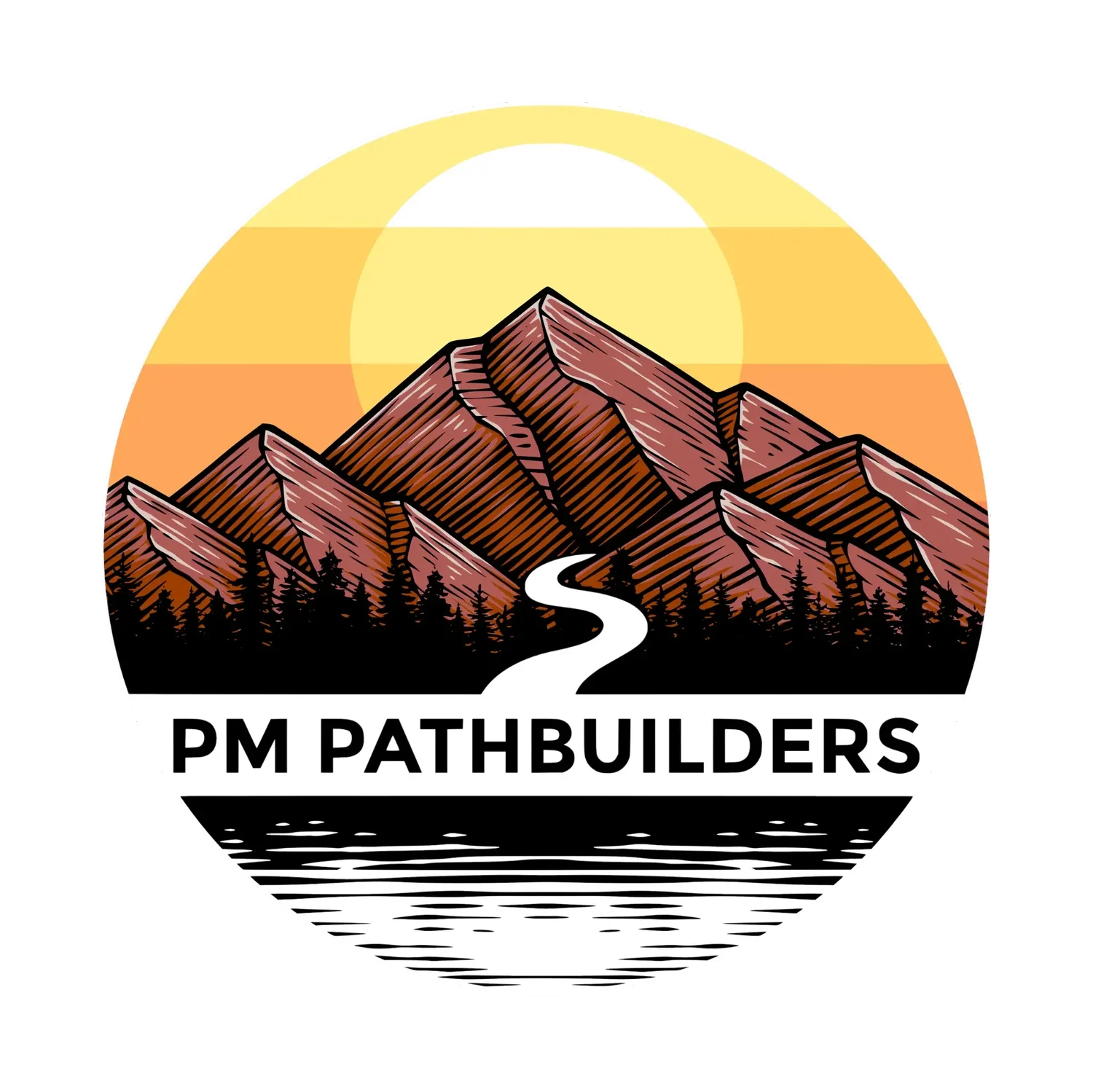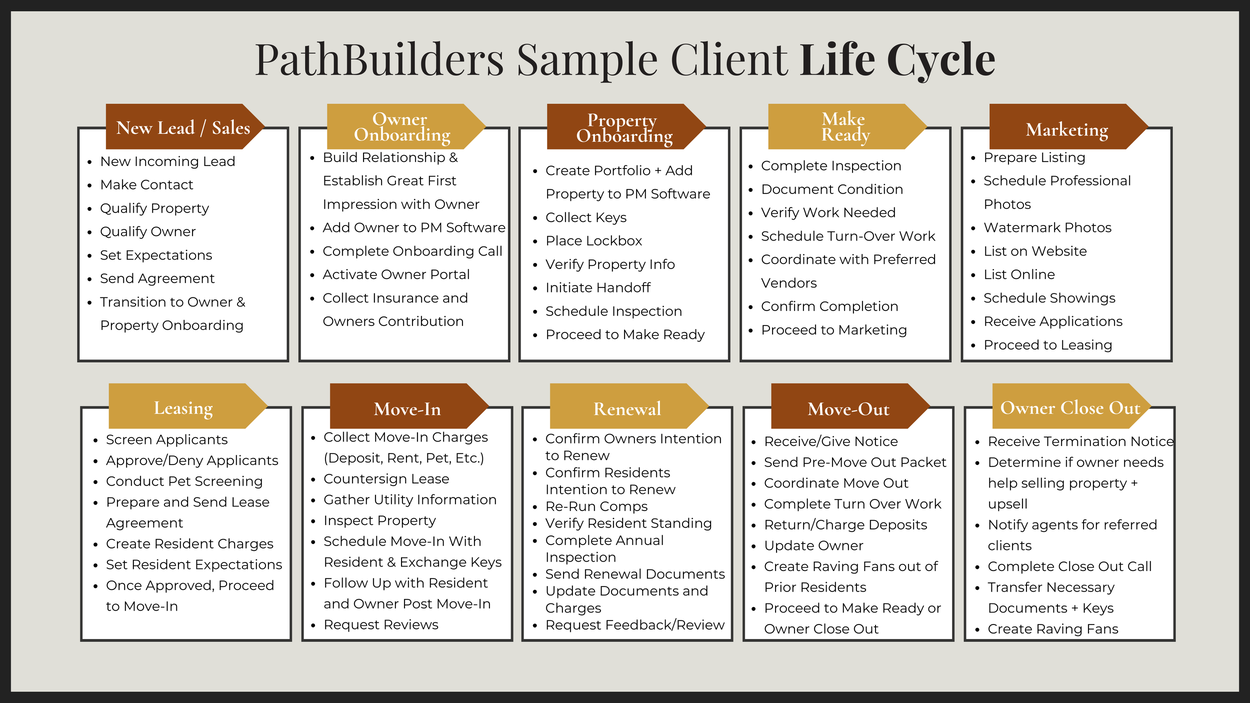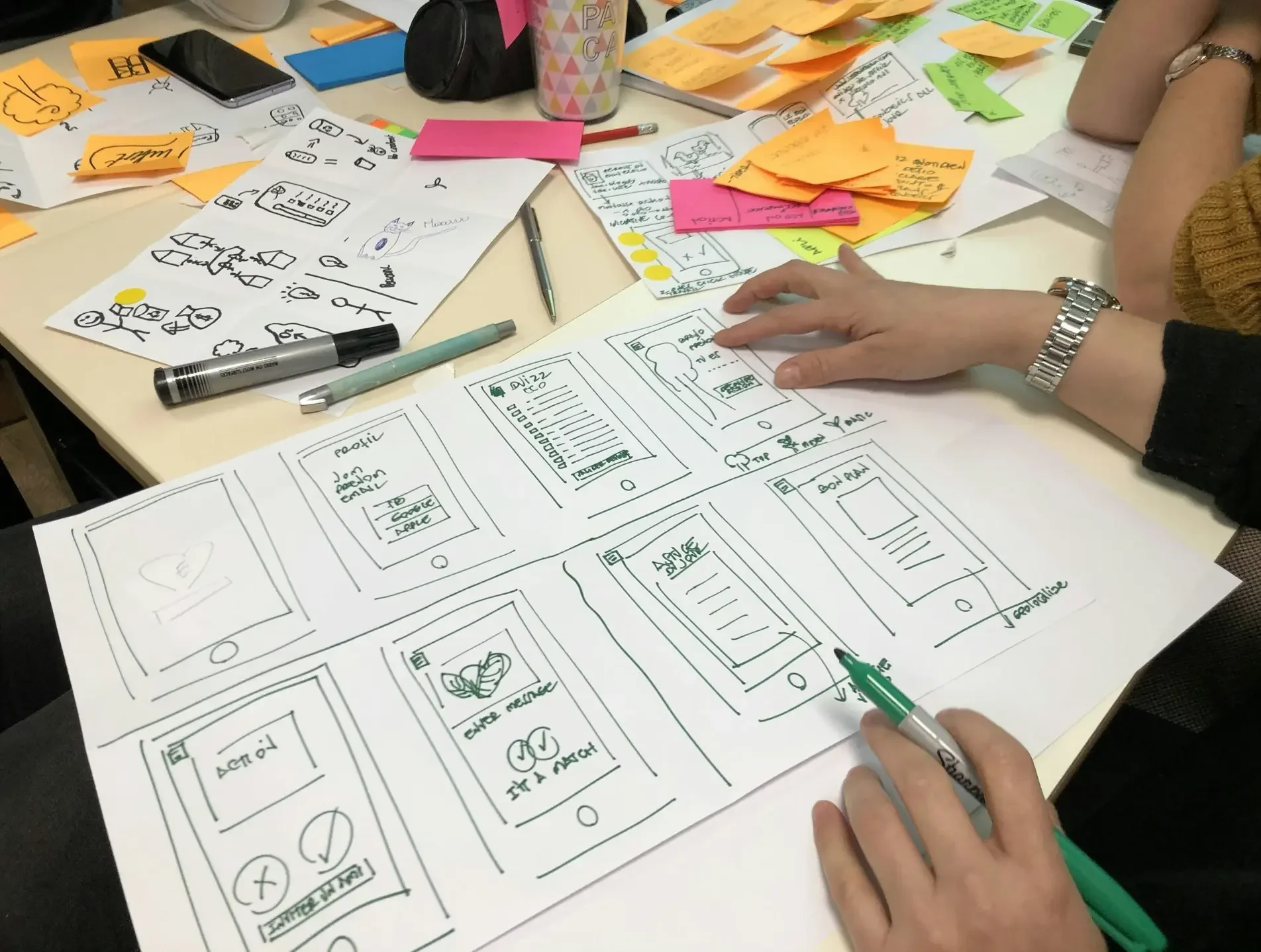The Ultimate 2025 Guide to Your Client Lifecycle
If you’re running a property management company and haven’t clearly defined your client lifecycle, you’re likely feeling the effects—disorganized operations, client confusion, and processes that change depending on who’s handling the task. The client journey is more than a buzzword. It’s the structure that guides every owner and property through your business from start to finish. When mapped out and implemented well, it gives your team direction, improves communication, and creates a more consistent client experience. In this guide, we’ll walk through what the customer lifecycle is, why it matters, and how to design one that actually works.
Table of Contents
What Is a Customer Lifecycle in Property Management?
Your client’s journey is the full journey a property owner experiences with your company—from the first touchpoint to offboarding. This isn’t just a workflow diagram. It’s a visual representation of how you support your clients from start to finish.
Whether you're managing 30 doors or 3,000, defining this journey helps you build processes around the client, not just your internal ops.
The lifecycle should clearly outline:
Where the relationship starts
What happens step by step
When and how clients transition between stages
Why the Client Journey Matters
Too many companies build systems based solely on what the team needs. But your client journey—how an owner feels supported at every stage—is what sets your brand apart.
When the lifecycle isn’t defined, you’ll see:
Reactive decisions
Process gaps
Disjointed communication
Client confusion or churn
On the other hand, a mapped-out client’s experience ensures:
Consistent delivery
Better experience
Fewer surprises for your team and clients
What to Include in Your Client’s Workflow Map
Every property management business is different. But there are core stages we recommend mapping out, especially inside your task or project management tool. Here’s a common lifecycle layout we build with our clients:
Owner Onboarding
Property Onboarding
Resident-Occupied Onboarding
Make Ready
Marketing
Screening
Leasing
Move-In
General Day-to-Day
Maintenance
Renewal
Lease Violation
Change of Terms
Delinquency
Annual Inspection
Move-Out
Turn
Offboarding
The point isn’t to follow this step-by-step. It’s to identify what makes sense for your business and build a process that supports your team and your clients through each one.
Client Journey vs. Internal Process Building
Process building is often focused on internal roles—who does what, and when. But a strong client service lifecycle centers the experience around the owner. It still serves your team, but it leads with empathy and visibility.
Ask yourself:
What does the owner expect at this point?
How can we build in touchpoints to manage expectations?
Are there gaps where clients feel ignored or confused?
Good lifecycle design creates alignment between your ops and your client journey, so both run more smoothly.
How to Build or Redesign Your Lifecycle
Start simple:
Pull up a whiteboard or open your project management software. Map out what currently happens from first contact to offboarding.
Then ask:
Where are the bottlenecks?
What’s missing?
What would the ideal experience look like?
It doesn't have to be perfect. It just has to be intentional.
If you're unsure where to begin, we're happy to help you build or refine your lifecycle around your team and client needs.
FAQs
-
It’s the full journey a property owner goes through with your company, from onboarding to offboarding, including all service and communication touchpoints.
-
It brings clarity to your operations, improves the client experience, and helps your team work more efficiently and consistently.
-
Internal processes focus on how your team works. The client journey focuses on how the owner experiences your service. Both need to be aligned.
-
Task management software like Asana, ClickUp, or Monday.com works well. You can also use flowcharts or whiteboarding tools for initial drafts.
Final Thoughts
Your client journey is the foundation of your service delivery. Without it, you're winging it and your clients can feel that. The goal isn't perfection. The goal is clarity, consistency, and better experiences for everyone involved.
If you need help designing or reworking yours, reach out. This is what we do at PM PathBuilders, and we’d love to support your growth.
Ready to Build Your Client’s Best Experience?
Let’s work together to design a client journey that actually works—for your team and your clients. Book a strategy call today and take the first step toward operational clarity and consistent growth.


